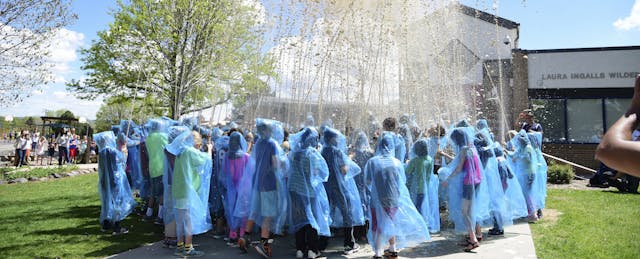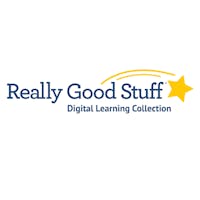No one cared that it was cold outside. The kids could hardly wait to see what would happen next. Giggles and laughter bounced from child to child as the group of second graders positioned themselves around the 2-liter bottle of diet soda.
In a whispered voice, one boy asked, “Do you really think she’s going to do it?”
“Sure… she’ll do it, but you have to get ready to run,” replied the girl standing next to him.
Mrs. Schmidt removed the roll of Mentos mints from her pocket and loaded them into a small tube that attached to the top of the soda bottle. The only thing that kept the Mentos from falling into the soda was a plastic pin tied to a piece of string.
“Are you ready?” Mrs. Schmidt asked.
“YES!” shouted the students who could hardly contain themselves.
“Three… Two… One… Go!”
It all happened in a fraction of a second. Mrs. Schmidt pulled the string, the Mentos fell into the soda and a giant soda geyser shot up everywhere. It was raining Diet Coke! As soon as the soda started to spray, the children scattered.
The students screamed, “That was awesome… do it again!”
When Mrs. Schmidt finally regained control, she told the children, “This is just a ‘one-time’ experiment. I don’t have any more soda, but wasn’t that cool?”
As she walked her students back into the classroom, Mrs. Schmidt was sure she’d hit a home run with her exploding soda experiment. It had all of the elements of a great science lesson—it was hands-on and the fun factor was huge.

Okay, But Where’s the Science?
But what was the real takeaway for the students?
From Mrs. Schmidt’s point of view, she was doing an exciting, hands-on activity and her students were having a blast. However, if you look at the activity on a deeper learning level, you’ll spot the most important missing element: the act of actually doing science! The harsh reality is that Mrs. Schmidt’s flying soda activity was cool, but her students were never doing science. The only level of student engagement was running away from the flying soda. The bottom line is that the students watched their teacher perform a cool trick using mints and soda, but calling that science is wrong on many levels.
MIA: Wonder, Discovery and Exploration
Student engagement in their own learning was the missing piece here. When students drive their learning experience, they engage in authentic learning. (Chicago’s LEAP Innovations, for instance, notes: “Personalized learning places every student in the driver’s seat, actively integrating their needs, strengths and interests into their learning.”) Doing real science—classic, inquiry-based activities where students ask questions, explore, make mistakes, observe changes, scrap their first assumptions and then draw conclusions—not only enables students to learn science but strengthens their approach to learning, giving them a lifetime of skills.
Perhaps the greatest challenge for educators aiming to educate the whole child starts with their own learning—for teachers themselves to learn how to step back and give the student the opportunity to build their own questions and internalize learning. Digital activities can provide students with an interactive way of learning about science. They can use trial-and-error, deductive reasoning and many of the same concepts used when scientists do real-world experiments.
The first key to engaging students in doing real science is to understand the difference between a science demonstration and a hands-on science experiment. Demonstrations are usually performed by the teacher and typically illustrate a science concept. Science experiments, on the other hand, give participants the opportunity to pose their own “what if…?” questions, which inevitably lead to controlling a variable - changing some aspect of the procedure or the materials used to perform the experiment.
In this example, the students were never given the opportunity to ask questions, make changes, create a hypothesis or compare the results of the new experiment with the original. When the students yelled, “Do it again!” this should have been music to any teacher’s ears. The great Mentos Geyser experiment captured her students’ interest, and they were, in essence, begging for an opportunity to explore, to ask their own questions, to test changes to the procedure, to formulate new ideas and to make their own big discoveries.
Instead, Mrs. Schmidt gave a commonly used response when her students wanted to be engaged: “No, this is a ‘one-time’ experiment.” One time? Who can eat just one potato chip? No one ever performs an experiment just once! Demonstrations may be one-time events, but great experiments lead to more questions, which lead to making changes and trying the experiment again. It’s a wonderful cycle of critical thinking called scientific inquiry… and you don’t need a PhD in rocket science to pull it off.
Great Demos Lead to Greater Questions
One of the attributes of an amazing science teacher is how he or she uses a cool science demonstration to grab students’ attention and stimulate their natural curiosity. Great science teachers use demonstrations in ways that invariably precipitate the question: “How did you do that?” Evidence indicates that students retain science concepts much longer when they see an engaging demonstration that provokes questions and then challenges them to figure out the answers. If a science demonstration serves its intended purpose, students come alive with a stream of questions. Then it’s the job of a great teacher to help the young scientists turn those questions into unforgettable learning experiences.
Beyond the Fizz
No one should fault Mrs. Schmidt for sharing the Mentos Geyser with her students. If her primary goal was to get her students excited about science, she did it. Authentic learning, however, would likely start later—say, when Mrs. Schmidt gave her students an opportunity to engage in the learning process. Learning this way is messy, unpredictable and, candidly frequently a lesson for both students and educators. But in the hands of a great teacher, cool science demonstrations like the Mentos Geyser open the door to an amazing journey filled with wonder, discovery and exploration. By using the power of inquiry to create unforgettable learning experiences, you rekindle a child-like sense of wonder—in both your students and yourself—right before you all become a soaking mess from flying soda. Don’t worry; they’ll be talking about what they learned at the dinner table for years to come.



